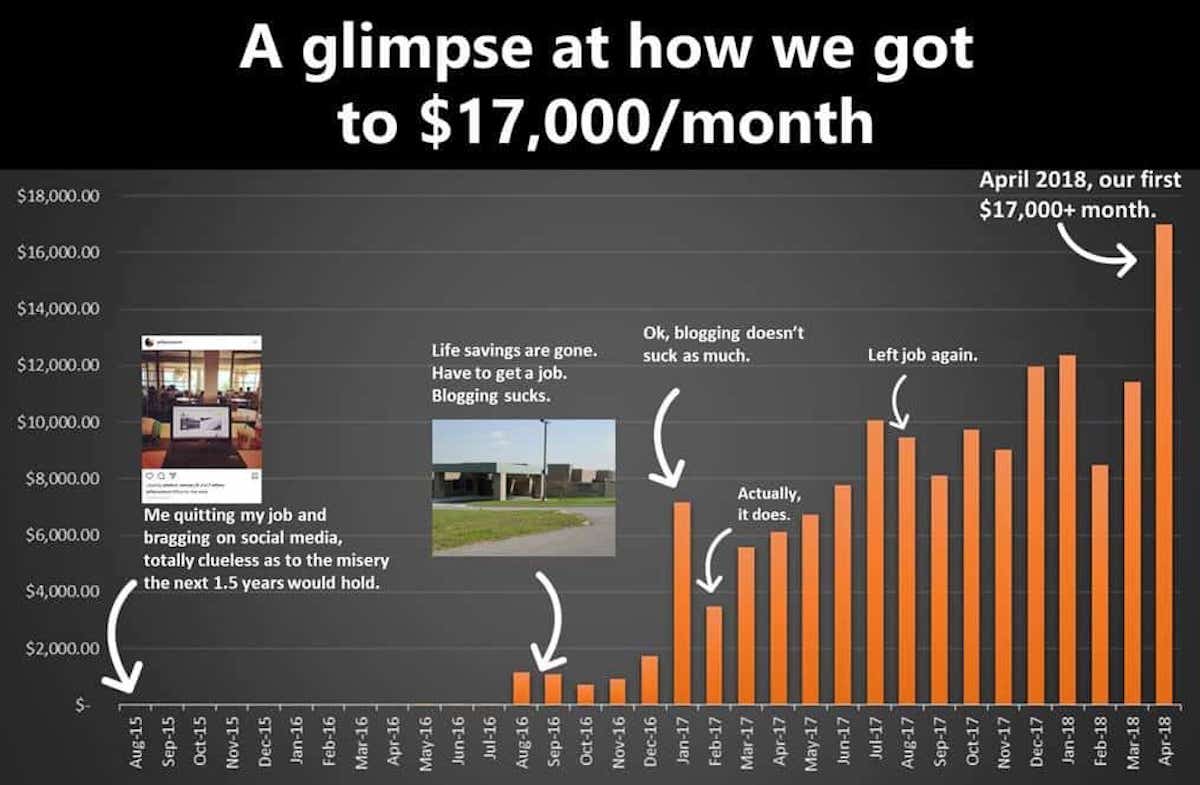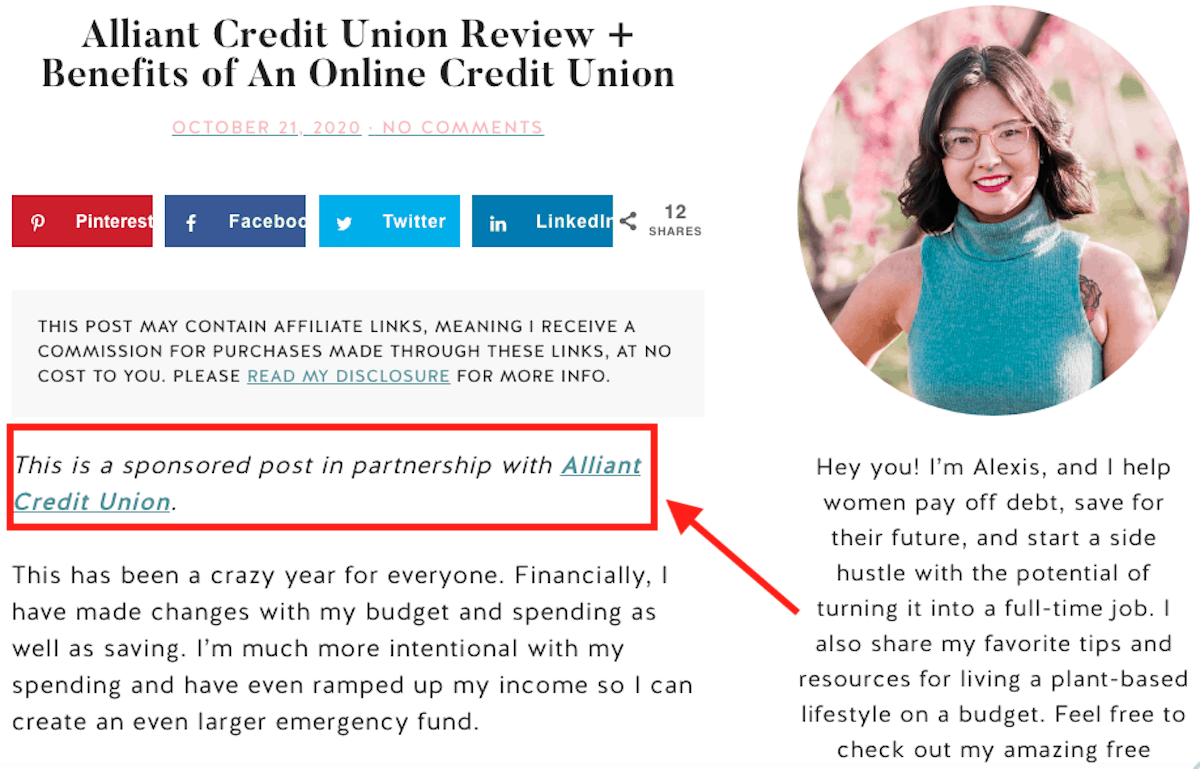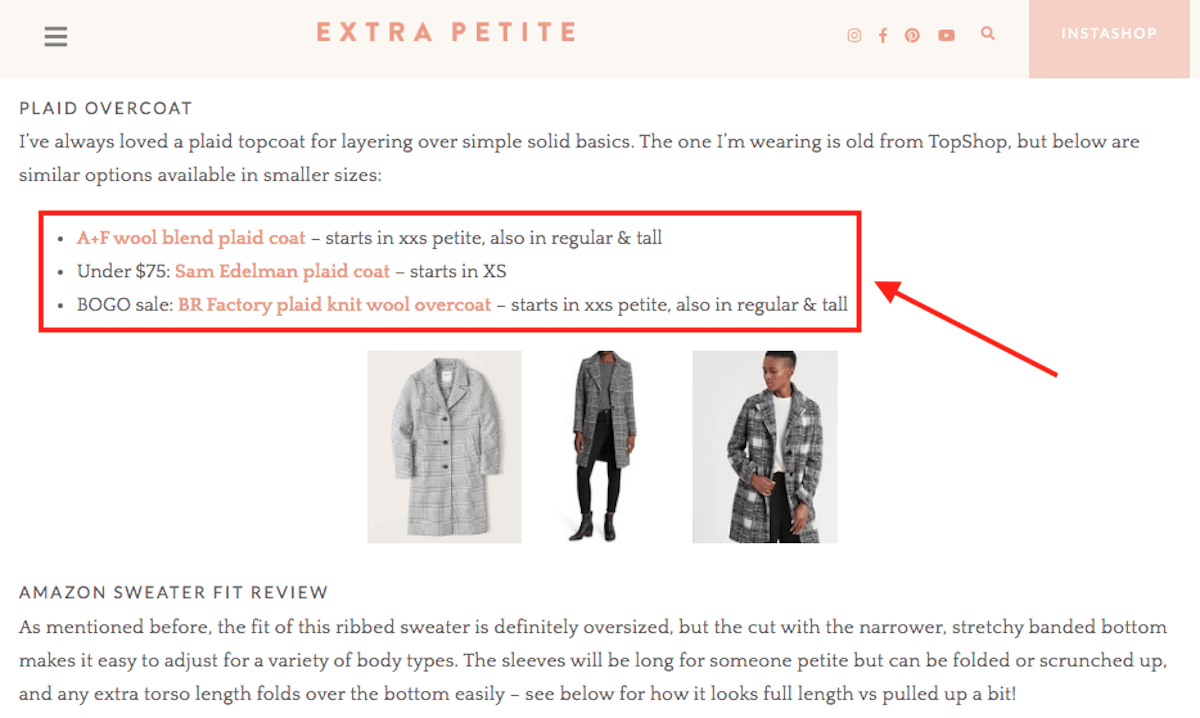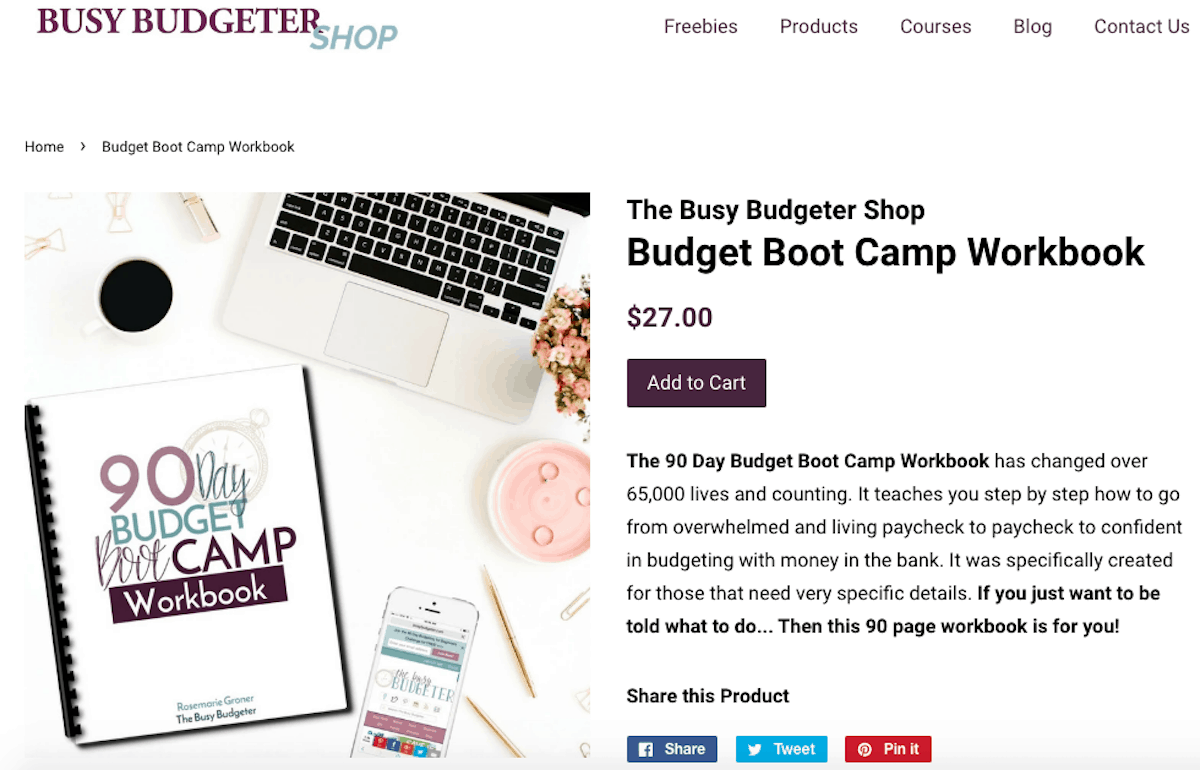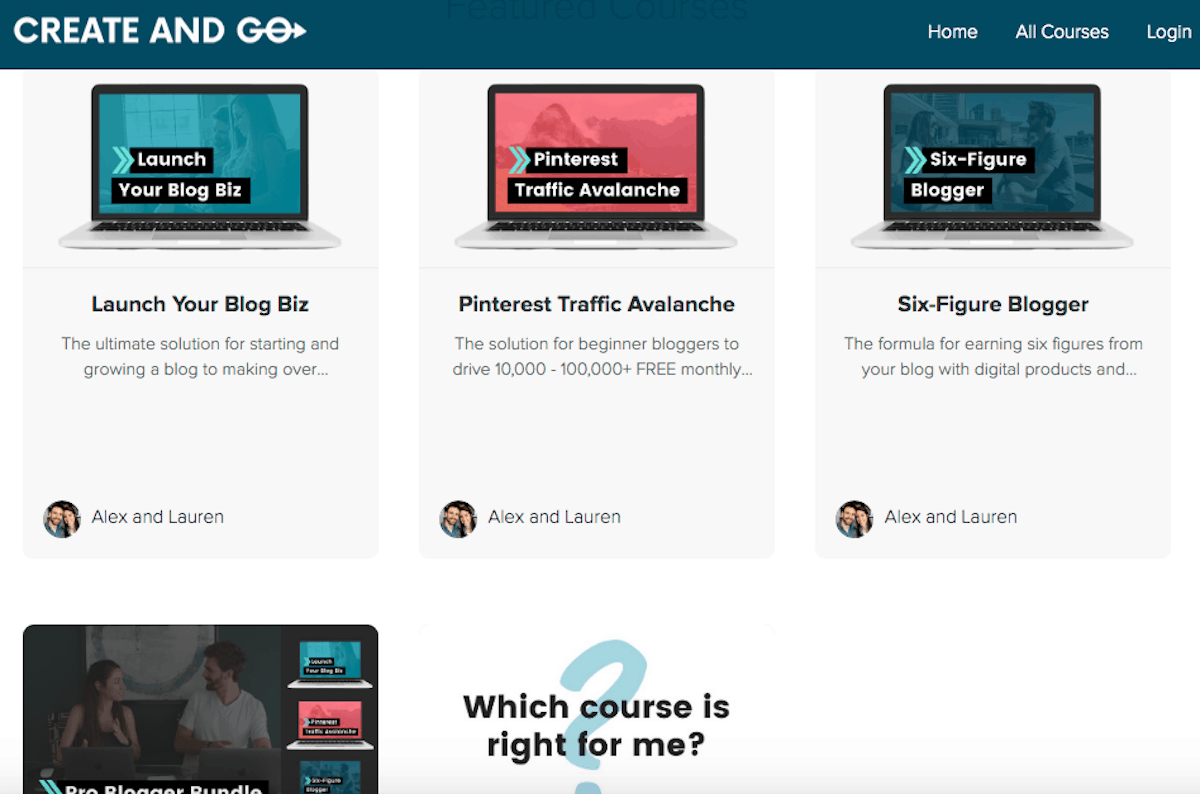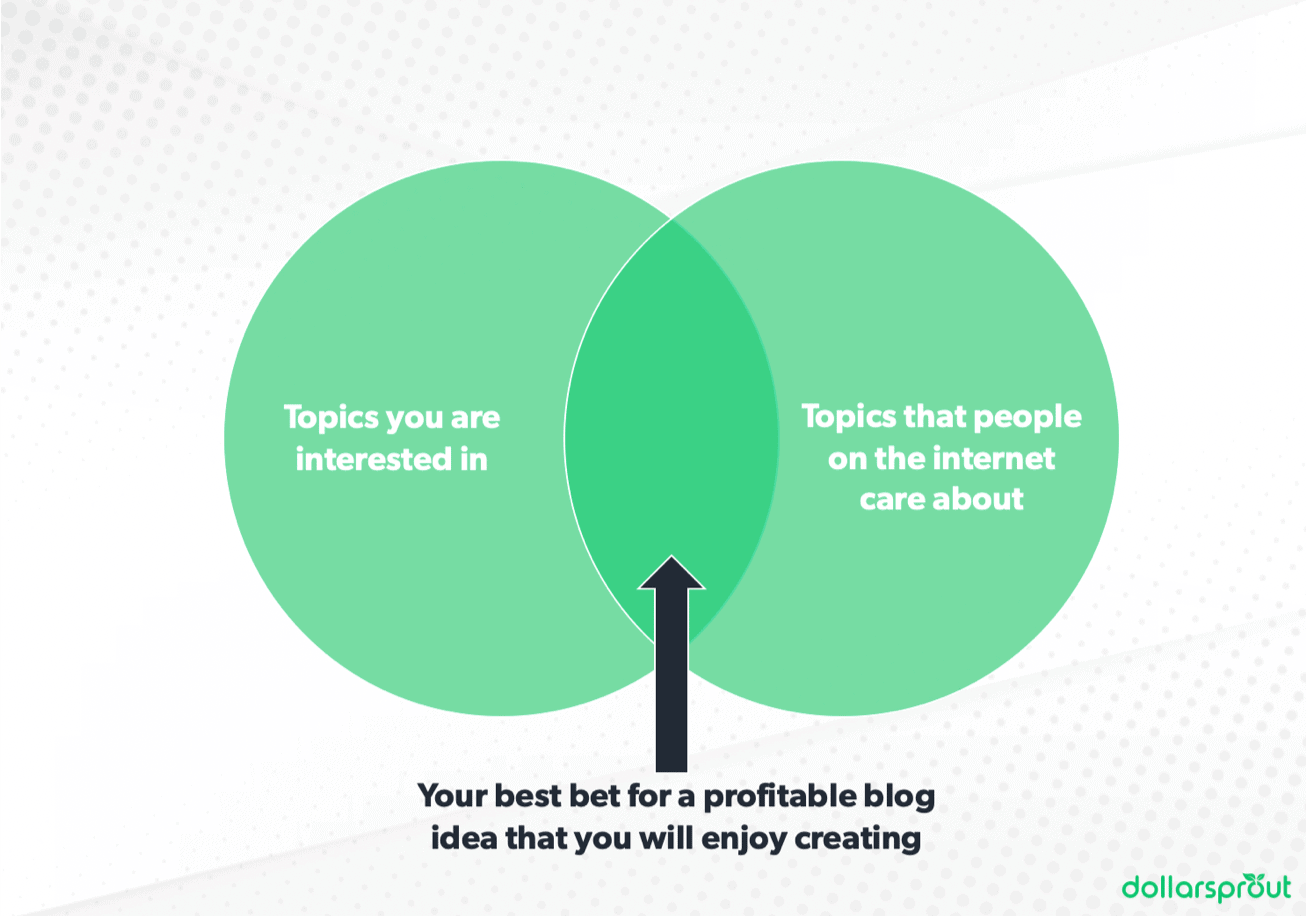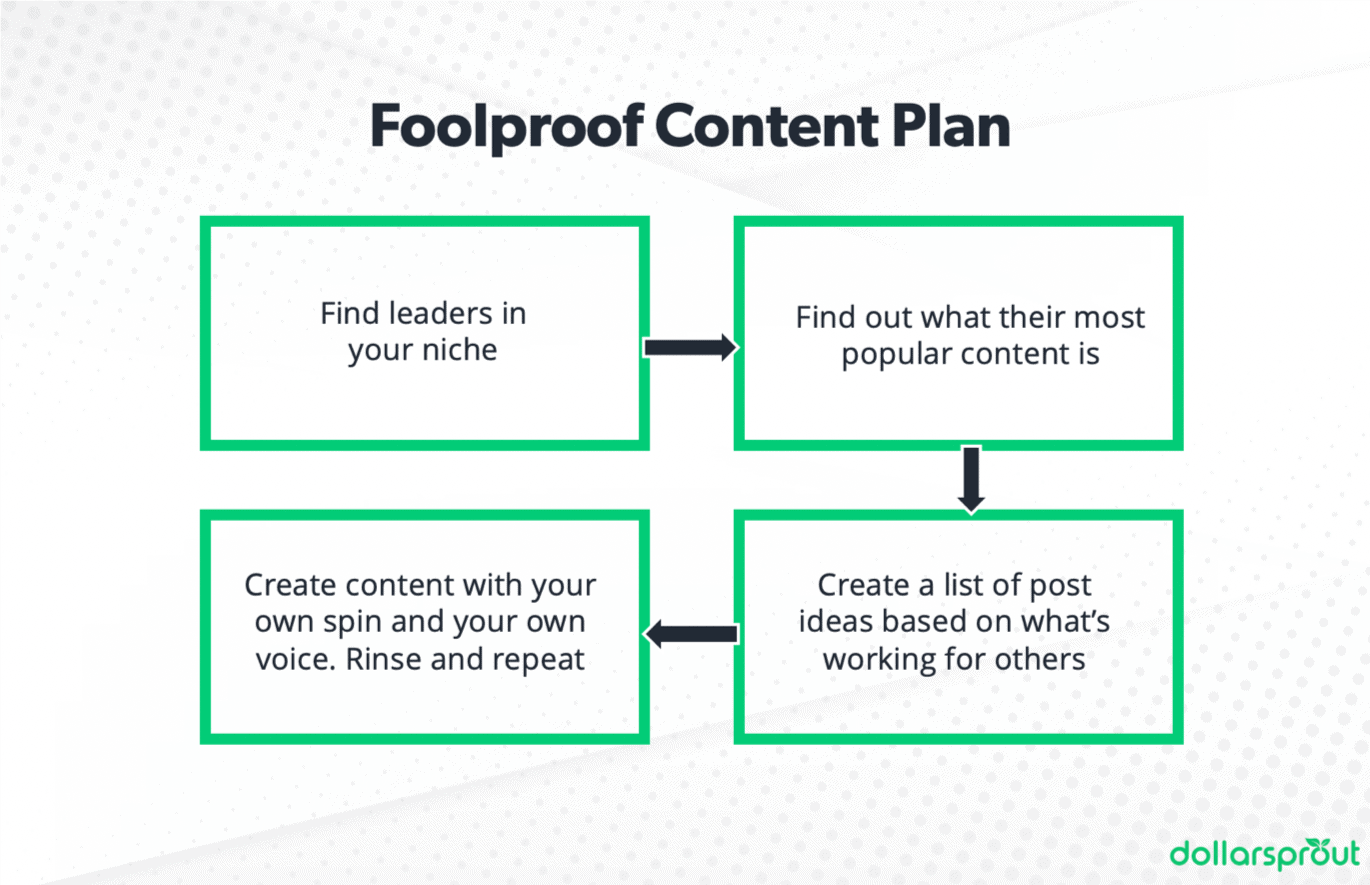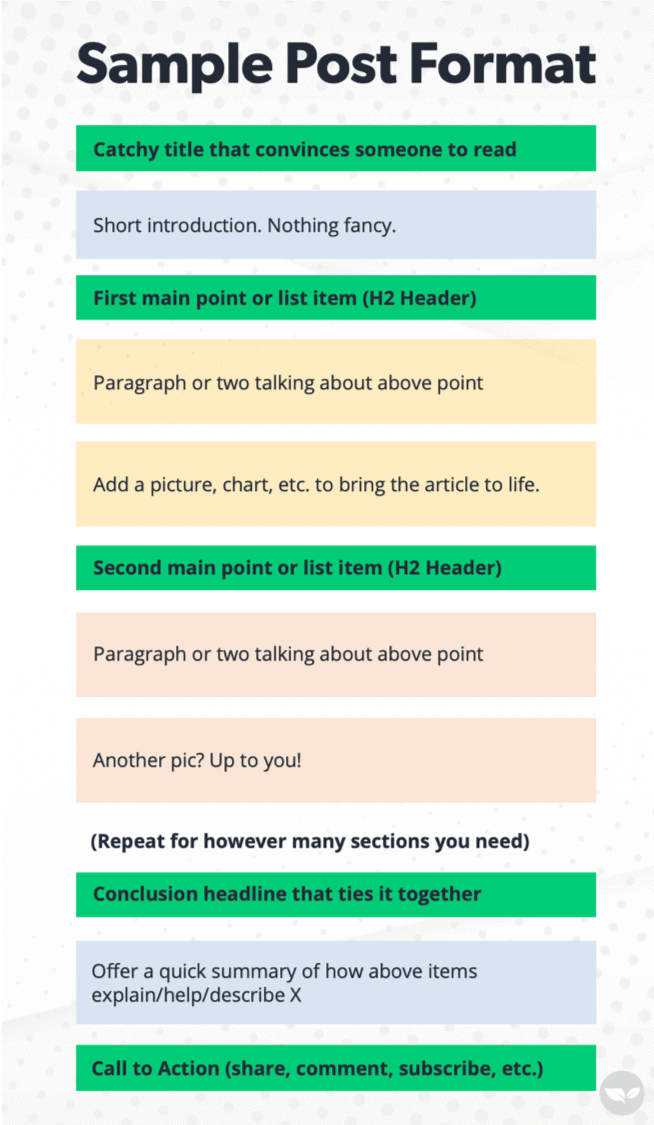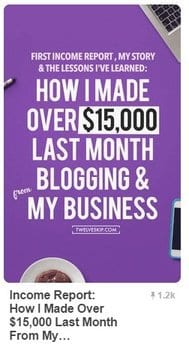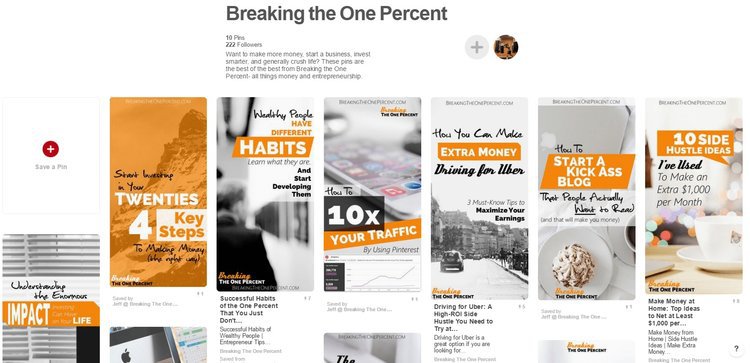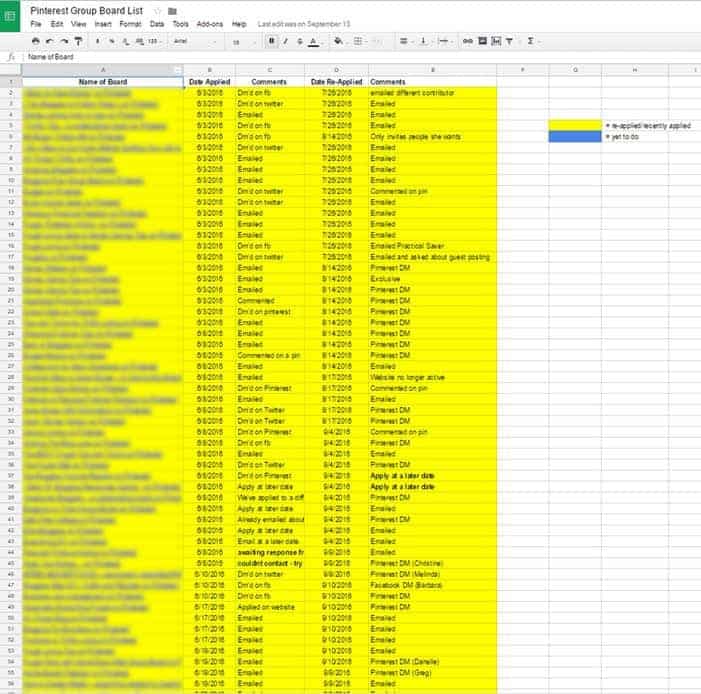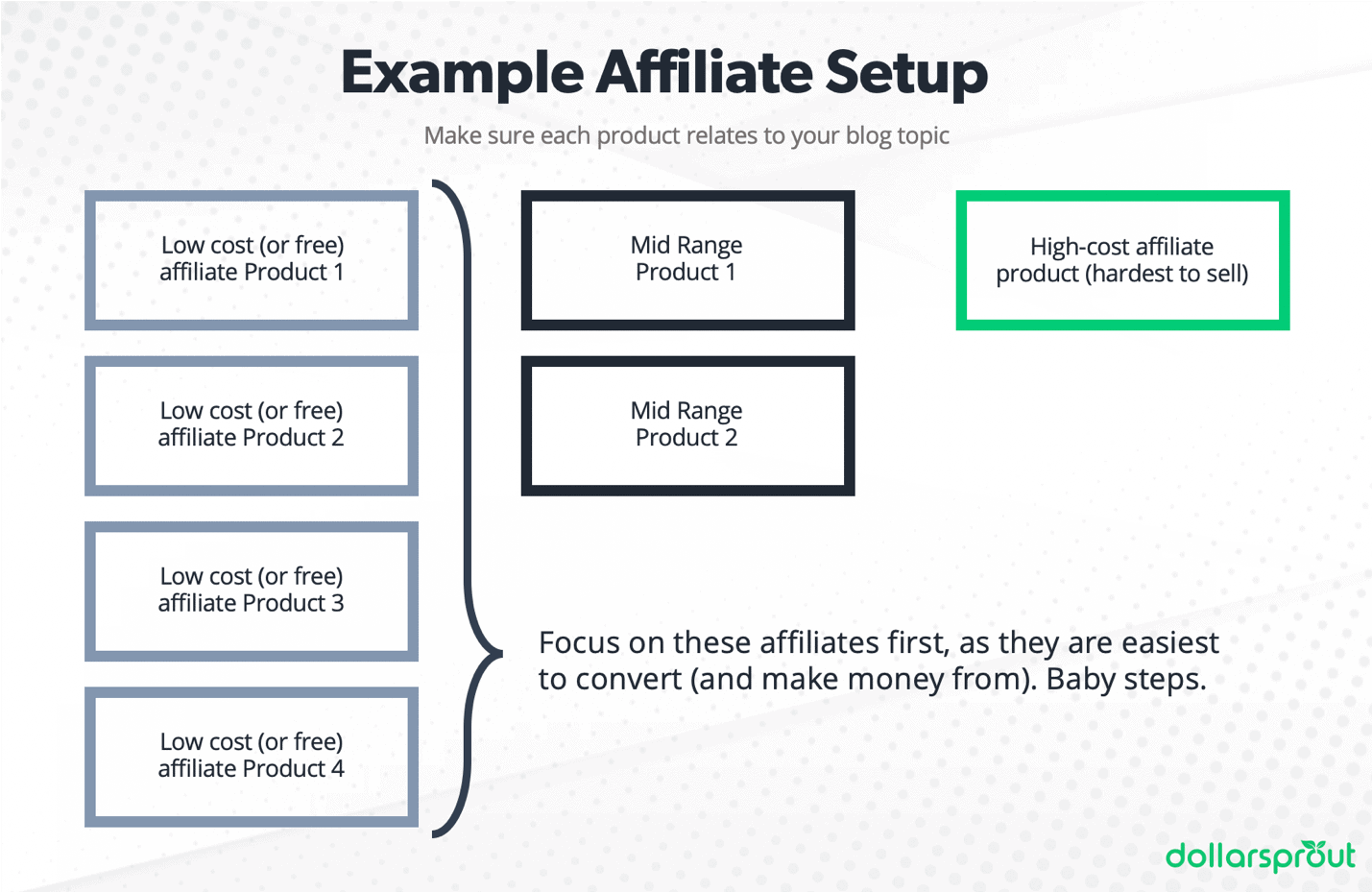How to Make Money Blogging in 2025 (Expert Guide)
Our readers always come first
The content on DollarSprout includes links to our advertising partners. When you read our content and click on one of our partners’ links, and then decide to complete an offer — whether it’s downloading an app, opening an account, or some other action — we may earn a commission from that advertiser, at no extra cost to you.
Our ultimate goal is to educate and inform, not lure you into signing up for certain offers. Compensation from our partners may impact what products we cover and where they appear on the site, but does not have any impact on the objectivity of our reviews or advice.
Making money as a blogger can be a difficult, frustrating journey -- especially for the unprepared. Here's everything you need to about choosing a blog topic, setting up your blog, and making your first four-figures.

Our mission at DollarSprout is to help readers improve their financial lives, and we regularly partner with companies that share that same vision. If a purchase or signup is made through one of our Partners’ links, we may receive compensation for the referral. Learn more here.
Five years ago, if you’d told me I’d be sitting here today making a living blogging, I would’ve laughed in your face.
Actually, I probably would’ve said, “What the heck is a blog? And how can you make money blogging?'”
Five years ago, I was working as an investment analyst at a financial planning firm. I went to work every day from 9 to 5, dreaded Mondays, and looked forward to weekends that never lasted long enough.
There were a few things I appreciated about my job at the time. Consistent paychecks, health insurance, some of my coworkers.
But for the most part, I was not a fan of the 9-to-5 life. And by that, I mean:
- Feeling underappreciated and like my work didn’t matter
- Not having control over my income
- Having to ask permission to take time off
- Office politics (the worst)
Starting a business seemed like the answer to all my problems. But I never would’ve guessed that business would be a blog. What started as our little blog is now a seven-figure online business.
Our Blogging Story
First off, we (my business partner Ben and I) didn’t get into blogging intentionally. We sort of fell into blogging by accident.
We started our business in 2014. Originally, it began as an investment membership site: people would pay us for detailed stock market analysis and specific insight about where they should invest their money.
Needless to say (since you’re reading this article), that idea failed miserably. In fact, in our first 18 months of existence, we made $29.00.
Obviously, our original idea wasn’t working, so we needed a plan B.
That’s when we stumbled onto blogging. We quickly realized that other people were making thousands, even tens of thousands of dollars per month from their blogs. Our first idea failed, and I wasn’t about to go crawling back to the full-time job I had just quit a year earlier, so we gave it a go.
Blogging was slow-moving for us at first, but we kept reading, learning from others, and testing strategy after strategy until, finally, we figured it out:
Note: This is an old graphic. Today, our websites generate over $100,000 per month. But, this perfectly captures the roller coaster ride that was our first couple of years in business.
That first little hint of success was all the motivation we needed to keep going. From there, we were able to grow our income each month. (Well, most months.)
If we’d had a guide like this when we first started our business, we probably could’ve skipped the first year and a half of pure stress, confusion, and turmoil and gotten where we are now in a fraction of the time.
We had no idea how to make money blogging when we first started out. Fortunately, we made a lot of mistakes on our blogging journey so you don’t have to. Before we dive into how to monetize your blog, you need to know…
The Top 4 Ways to Make Money Blogging
Some ways to make money blogging are simply easier and faster, while other revenue streams take more time and effort to build.
As a blogger, you have many monetization options to choose from, and you don’t have to choose just one. In fact, it’s wise to have multiple revenue streams. That way, if something happens and one revenue stream drops, you still have other monetization methods in place.
However, we recommend focusing on just one or two in the beginning. Build up one revenue stream before moving on to the next.
There’s no one “right” way to make money blogging. The revenue streams you choose will depend on your audience and blog topic. Let’s take a look at some of the best, most common ways to make money blogging.
1. Advertising
When most people think of starting a blog, this is the first revenue stream that comes to mind. Often it’s not the most lucrative, but it is one of the easiest ways to get started. There are multiple ways to make money with advertising on your blog.
Display Ads
You know when you visit a site and see ads for cars or clothes or something you were just looking at on Amazon?
Those are display ads. Each time you click one of those ads, the website earns a little bit of money, which is why they call it pay-per-click (PPC) advertising.
You can see how Erin from Erin Lives Whole uses display ads to monetize her recipe content.
We typically don’t recommend display ads as a way to make money blogging for a few reasons:
- It makes for a poorer user experience. How many times have you been to a site and could barely scroll through the page without an ad popping up every two seconds?
- It is totally dependent on your traffic. And you need a significant amount of traffic (tens of thousands of visitors per month) to make any significant income with display ads.
- It takes users away from your site. You may get $0.80 for someone clicking on your ad, but now they’re on someone else’s site buying their things and making them money.
The easiest PPC method to get started with is Google AdSense. However, to make any kind of decent money with display ads, you’ll need quite a bit of traffic. And by the time you get that much traffic, you’ll make more money going with an ad management company like Mediavine (minimum of 25,000 monthly impressions to join) or AdThrive (minimum of 100,000 monthly pageviews to join).
All in all, display ads aren’t the best way to make money with a blog. There are much better ways to make money blogging than sending people away from your site.
However, it’s also not the only form of advertising.
Sponsored Content
Once you start building an audience, you’ll be able to land opportunities for sponsored content on your site and social media.
This is when companies pay you for tweeting, writing a Facebook post, or publishing an article about their products or services. Putting that content out to your audience helps them build brand awareness and maybe even increase sales.
Take, for example, this article from Alexis Schroeder at Fitnancials. She disclosed at the top of the article that it’s a sponsored post.
We’ve done this with a few companies on our own website, but it’s also not our favorite way to make money with our blogs. First of all, it’s one-off income. We prefer more passive, scalable revenue streams. Secondly, writing that content takes time, and unless you already have an audience, you can’t expect to make much money with this one.
The larger and more engaged your audience is, the more valuable you are to these companies, and the more they’re willing to pay you for media mentions. Therefore, this is not the best monetization method for new bloggers.
Reviews and Giveaways
Another form of advertising on your blog is to do product or service reviews or run a giveaway.
Oftentimes, companies will ask bloggers to write a review on their website about one of their products. In exchange, the blogger gets to keep the product for free. Or for a giveaway, maybe you get a product and you get another to give to the winning reader.
This can be nice if all you’re looking for is free stuff. But if you’re looking for cash, there are better ways to make money blogging.
2. Affiliate Marketing
This is our favorite way we make money with our websites.
Affiliate networks have many products and services for you to promote all in one place. Alternatively, you may earn higher commissions by working directly with the company you want to promote if they have a system for that.
In her article on Extra Petite, you can see how fashion blogger Jean Wang includes affiliate links to clothing items referenced throughout the post.
With affiliate marketing, you create a piece of content once and earn money from it for as long as it remains useful to your readers. You’ll want to update your articles every so often to make sure the content stays relevant, but it’s still a great way to make passive income from your blog and, we think, one of the best ways to start making money with a new blog.
3. Digital Products
Digital products are another awesome way to make money with your blog. Rather than selling someone else’s product or service, you’re creating something of your own and selling it directly to your audience.
There are many options to choose from when it comes to digital products, but we’re going to look at what we’ve seen and consider to be the top three.
Ebooks and Workbooks
The first product we ever created was an eBook. At the time, we were still trying to sell investment advice online (before we figured out the whole blogging thing), so as we’ve already covered, that was a failed venture.
However, there are many bloggers out there who make great money from their workbooks and eBooks.
One who comes to mind is Rosemarie Groner of The Busy Budgeter. She sells her Budget Boot Camp Workbook for $27, along with various other workbooks and worksheets.
The difference between a workbook and eBook is the amount of involvement or activity on the reader’s end. An eBook is mostly text with maybe an exercise or two thrown in. A workbook helps your reader do or accomplish something by leading them through the process.
In Rosemarie’s budgeting workbook, for example, she leads her reader through the process of organizing their finances and creating a budget. Workbooks and eBooks are a great place to start with digital products since they’re decently quick to make, unlike our next digital product.
Online Courses
This monetization method has become incredibly popular over the last few years. Many of the bloggers making a significant income online do so by selling premium courses.
Alex and Lauren from Create and Go make over $50,000 per month selling digital products and online courses.
It takes more time to create a course than other digital products, but the profit margins are much higher.
Membership Sites
A membership site is basically a paid online community. Subscribers pay you a monthly fee for access to premium content, which could include weekly classes, workbooks and printables, video lessons, tutorials, or whatever else you have to offer.
Think of it as a mix between teaching and community.
In her ADDICTED Business Academy, Meera Kothand offers pre-recorded and live monthly trainings, a members-only community group, and personalized 1-on-1 coaching.
Memberships can be a great way to monetize your website or blog, but it’s not a good fit for most beginner bloggers. We recommend starting with affiliate marketing and smaller digital products first.
4. Services
While offering services is by far the fastest way to make money with your blog, it’s also the least scalable. Your blog doubles as your portfolio when pitching clients, so you can make money working for others while building your other income streams. Here are some of the best services to offer as a new blogger.
Digital Marketing
In case you haven’t realized it yet, blogging is about much more than just writing and publishing articles. Along the way to building your blog, you learn about social media strategies, design, SEO, content marketing, and about a million other things.
Many of those things fall under the umbrella of digital marketing, and they’re incredibly valuable to other businesses.
Our friend Bobby Hoyt from Millennial Money Man realized that soon after he started his blog. His site wasn’t making any money at the time, so he needed to find another way to bring in some cash. That’s when he started reaching out to other businesses to offer his services doing the things he’d learned from blogging (Facebook ads, writing online content, social media strategy, etc.).
That bright idea turned into a nice little side hustle and allowed him to continue building his blog and growing his online business. He’s now a full-time blogger and makes money with courses teaching other bloggers how to make money on Facebook by running ads for other companies.
Virtual Assistant
Virtual assistants are in high demand for online entrepreneurs. A virtual assistant helps business owners with everything from administrative tasks to design to email marketing.
Your services will depend on your specific skills and experiences. For example, if you have impeccable spelling and grammar, then one of your services could be to proofread articles for other websites.
Jenny Weg, mom and lifestyle blogger, was able to monetize her blog immediately and start bringing in $2,000 per month offering virtual assistant services.
Freelance Writing
This is one of the easiest and most common services to offer as a new blogger. You’re already writing content for your own website, so why not get paid to write for someone else?
Freelance writing is a great way to practice your writing skills and get your name out there. It’s also perfect for building authority if you write for sites in your niche.
And don’t think for a second that “freelancing” is synonymous with “working for pennies.” Some bloggers make upwards of six figures per year as a freelance writer.
How to Make Money Blogging: A Guide to Your First $1,000
Now that you’re up to speed on the different ways to monetize a blog, let’s talk strategy.
If you commit to following every single step in this article, you can money with your blog within a matter of months.
That being said, the first $1,000 you make blogging is probably going to be some of the most difficult money you’ve ever earned in your life.
There’s no doubt in my mind that it’s easier to make $1,000 flipping burgers (I’ve done both).
But, once you hit that $1,000 mark, the sky is the limit.
You’ll be surprised how quickly your blog can grow and your life can change once you get past the initial hurdle of profitability. You just have to stick with it to get to that point.
If you want to escape your 9-to-5 and make a full-time income from home (and eventually more than a full-time income), blogging is one way to accomplish that.
Here are the exact steps you need to take to make $1,000 blogging, even if you’re a total beginner.
Step 1: Choose a blog niche
The biggest mental roadblock I see out there: people thinking they need to come up with something 100% unique that hasn’t been written about yet.
Or worse, thinking that you can only write about something you have a raging passion for.
Here’s something for you: I’m not “passionate” about the subject areas of our blogs (personal finance and blogging/business). Sure, I enjoy both topics, but it’s not like I have a primal calling to write about them. I just enjoy both things, and that’s enough to keep me going.
And yes, there are a million other blogs out there that already cover what we write about. The internet is a really big place, but I can promise you there is room for all of us.
So what should you write about?
If you want to make money from your blog, you need to treat every decision you make like a business decision. When it comes to choosing your blog niche, that means using some common sense:
Here are some things to consider:
- Write about something that interests you. Otherwise, it won’t be enjoyable and you’ll fizzle out after a while.
- Find something that other people are interested in, too. If you choose to write about Himalayan basket weaving for men, you probably won’t have many readers, and you’ll have a hard time earning any income. Try to find something that combines your interests with things other people also care about. For my main blog, I write about money advice. I’m a personal finance nerd and, fortunately, there are people online looking for that type of information.
- You DON’T have to be a world-class expert on your topic. You just need to know a little more about your topic than your readers.
Have a question about whether a particular niche has a good income potential? Post your question in our Facebook group and you’ll get tons of helpful feedback.
Step 2: Set up your blog (if you haven’t already)
Obviously, in order to earn money from a blog, you first need a blog. If you already have your blog set up, then you can skip this step.
If you haven’t started your blog yet, first of all, good on you for doing your research. But eventually you’re going to have to stop researching and start doing. That’s what this step is about.
You may have heard of WordPress but still aren’t quite clear on what it is.
Think of WordPress as the backbone of your blog. It’s the easiest to use (and most powerful) content management system (or CMS) in the world. WordPress is what makes it possible for regular people like you and me to build and run a website without being a web developer.
In fact, you don’t need any coding knowledge whatsoever to get started with WordPress.
You have two main options for starting your blog: “Self-Hosted” on WordPress or “Free WordPress.”
Self-hosted WordPress is the best option if you want to make money with your blog.
Even though you have to pay for your own web hosting out of pocket, going this route allows you much more flexibility in terms of site design, usability, and monetization.
Hosting is also inexpensive, especially if you take advantage of our partnership with HostGator. Depending on your hosting plan, it shouldn’t cost you more than a few dollars a month.
There are a few key differences between WordPress.com and WordPress.org.
With the free version of WordPress, you don’t really have that much freedom to make changes to your site. Plus, WordPress actually owns your site if you use the free version (meaning your site is technically not even yours). With the free version of WordPress, your website link even looks unprofessional; instead of a .com ending, your site will look like “yourwebsite.wordpress.com”.
I can’t think of even one successful blogger (in terms of income) who is using the free version of WordPress.
If you want to make money blogging, self-hosting is the way to go.
For step-by-step instructions, check out our free guide on how to start a blog with WordPress.
Step 3: Create helpful content
At this point, you should have honed in on a niche you feel comfortable writing about, and you should have your blog set up.
After you’ve got your blog set up, it’s time to write some epic blog posts.
If you have the end goal of earning income from your blog, you need to be strategic in the type of content you write and how you write it.
Here’s a basic framework you can and should use for planning out your content, at least to start. The main goal here is to get you in the habit of writing articles that you know people will want to read. You don’t want to waste time writing to an audience of zero.
Simple as that.
Why is this strategy so effective?
Because the leaders in whatever niche you are blogging about are already making money. And probably a lot of it.
They have cracked the code, and there is absolutely nothing wrong with trying to emulate their success.
That said, be cool. Don’t outright copy them.
Another way to find topics to write about
If the goal is to create content people want to read, then another method to come up with blog post ideas is to figure out what they’re already searching for. Using this strategy can help you build free organic traffic from Google.
- Type in some phrases related to your niche on Pinterest and see what comes up
- Search a common phrase or problem on Google and look at the “related searches”
- Use a free keyword tool like UberSuggest
One of the common misconceptions bloggers have about SEO is that you have to pay for complicated and expensive keyword research tools. But that’s not the case. You can use completely free SEO tools to find keywords for your articles. And not just any keywords, but ones that your blog can actually rank highly for.
When you know what people want to read, you’ll never run out of topic ideas.
Note: A great resource for using free tools to do keyword research is the eBook Get Your Keywords Together by Trinity Owen at The Pay at Home Parent.
Trinity started working as a freelance SEO in 2015. By 2017, she earned more than $50,000 per year helping clients increase organic traffic to their websites. She teaches a strategy that only requires free tools, manual Google searches, and some critical thinking skills to find the right keywords.
Create content with a purpose
Every piece of content you create should have a purpose:
- Making money via affiliate sales
- Getting people to sign up to your email list
- Growing your Facebook group
- Building your authority
Remember that with everything you write. Be clear on what you want your reader to do next, and, if necessary, ask them to do it.
Practice makes perfect
Figuring out what type of content to create takes practice. You’ll probably end up writing at least a few articles that you later delete, and that’s okay. We’ve all been there (trust me).
But the more you practice, the more articles you write, and the more you get to know your audience over time, the better you’ll become at creating high-quality content that people want to read.
Even if everything you want to blog about has already been covered by a million other blogs, there is no substitute for YOU.
Your voice, experiences, perspective.
The way YOU present your content.
Take this blog, for example. There are thousands of other “blogs about blogging” and personal finance… and a lot of them are way bigger than us.
Yet we’ve been able to carve out our own little tribe of followers online, and in turn, we have helped a lot of people with pursuing their online dreams. Our readers probably also read our competitors’ blogs like Melyssa Griffin, Pat Flynn, Michelle Schroeder, etc.. But they also read us.
They recognize that our perspective and our voice has value, even if we aren’t as big as the top dogs.
I think the same logic applies to any niche. To the average Jane on the Internet/Pinterest, there is not a saturation problem. She just wants to read great content, no matter where it comes from.
How to structure your blog posts so people read them
Repeat after me:
I will NOT use walls of text.
Using massive walls of text is the quickest way to kill a blog post.
The way we were taught in school to write is not how you want to write for your blog. Big paragraphs, pages and pages of solid text, etc. are not going to make readers want to stick around.
See what I mean:
So, no long paragraphs. But what about structure? Do you write blog posts like an essay?
Yes and no.
The key here, again, is to break up your articles into bite-size chunks. Here’s a template you can steal:
Write enough posts to fill up your theme’s homepage (so it doesn’t look empty). Then, it’s on to the next step.
When Ben and I first started blogging, we tried to be everywhere, all the time.
Facebook, Twitter, Instagram, Google+, LinkedIn, StumbleUpon, Quora, Quibb… we were all over the place.
And you know what?
For the longest time, our traffic sucked. I mean, it REALLY sucked. We weren’t getting anywhere. And we weren’t making any money.
That’s when we decided to try our hand at Pinterest, a platform neither Ben nor I had ever used in our lives up until that point.
And let me tell you, Pinterest changed everything for us.
For new websites, ranking high on Google is just not going to happen overnight, but Pinterest can be your secret weapon. It is, bar none, the best way to get your name out there if you’re a new blogger.
How to dominate Pinterest and grow your traffic
For most new bloggers, I recommend focusing exclusively, 100% on Pinterest to get your first significant stream of consistent traffic. It really is the best use of your time at this stage of your blog.
Let’s start with the basics of getting your account set up.
Get a business account and set up “Rich Pins”
You want to make sure you aren’t using a personal account to build up your Pinterest profile for your website.
With a business account, you’ll have access to Pinterest Analytics, as well as the ability to create “Rich Pins.” You can also pay Pinterest to promote your pins with a business account, but that’s definitely not necessary. We experimented with about $50 worth of promoted pins before figuring out we could make our pins go viral on our own, without the help of ads.
Rich pins make your pins stand out just a bit more by adding a bold link title in your pin description. Getting rich pins is really easy (and free, don’t worry). You just need to confirm your website with Pinterest.
Create a “Best Of” Board
Once you have a business account, the next step is to create your “Best Of” board.
The purpose of this board is to house only pins that link to content on your own website. This is not the place to pin other peoples’ stuff. You can (and should) make a bunch of other boards for that.
When other users are looking at your account and deciding whether or not they want to follow you, they’re going to be looking for this board to give them a sense for what type of content you’re contributing to Pinterest. In your board description, be sure to include lots of keywords that users might be searching for.
Ideally, you’d like to have at least 50 or so pins on this board. If you don’t have that many pieces of content, then you should…
Make multiple pins for each blog post
This is important for a few different reasons.
First, it’s always smart to A/B test your pins.
“You could write the best blog post in the world, but if I’m not enticed to click on your pin, you’ve just lost the game.”
Experiment with different image backgrounds, different calls to action (CTA), even different keywords in your description.
The other benefit of making multiple pins is that it makes it a little easier to run up your total pin count on your Best Of board. This helps when it comes time to apply for group boards, as you want to have a decent portfolio of pins that you can share.
I generally try to make 2 or 3 pins for each article. But sometimes I make as many as 10 pins if I feel it’s an article that deserves to get some real attention.
Brand your pins to stand out
I’ll admit, I could have done a much better job of this when I was first making the pins for our blog. I just didn’t know any better.
Then one day as I was scrolling through my Pinterest feed and this pin caught my eye:
Before I looked down to see who the creator of the pin was, I knew it was going to be from Pauline Cabrera over at brandglowup.com. Without even realizing it, I had subconsciously begun to recognize her purple-themed pins with the crisp block font. And I knew that those pins led to really good content, so I clicked on the pin and ended up reading her article.
That’s when it dawned on me how important branding is when it comes to creating your pins, as long as you have great content. The ONLY reason I clicked on that pin and went to her website was because it stood out to me in the sea of pins on my feed.
When we launched BTOP (which we’ve since merged with DollarSprout), I kept Pauline’s focus on awesome branding in the back of my head. Here’s a look at some of our first pins:
There are a few key points I’d like you to note with these pins:
- They all have some amount of our main brand color: orange.
- Pins that have both scripts and block font perform well.
- The background images are all very light/white themed. This makes the text stand out more.
- I don’t have a rigid format for each pin. I switch it up constantly, while still keeping the same theme.
- Each one has both a logo and our .com address to increase brand recognition/awareness.
Having rock-solid branding is important if you want to be recognized on the platform.
A lot of people use Canva or Photoshop to make their pins, but I’m old-fashioned and just use PowerPoint. Whatever works best for you is fine. PowerPoint is what I used in school for projects, so it’s also what I use to make pins.
Join Group Boards
This is where the real magic is with Pinterest. If you don’t know yet, the number of followers you have on Pinterest doesn’t mean much…it’s all about how engaged your followers are.
Group boards can help with this.
A group board is a board from someone else’s profile that they’ve given others access to post to. So when you join a group board, you get access to someone else’s followers for free.
And while they’re not as effective as they used to be, group boards can still be a powerful tool to help increase your reach and drive more traffic to your website, especially when you have 1,000 or fewer followers.
So how do you get on these group boards?
The first step is to compile a list of boards that you would like to join. The best way to do this is to look at what group boards some of the top accounts in your niche are contributors to. You can also use PinGroupie.com and search for group boards centering around different topics.
Not every group board with a big following is going to be worth your time. A tool like Tailwind will show you each board’s quality score and engagement. If a board has a lot of activity from pinners but very little engagement from followers, don’t waste your time contributing to that board.
Each group board admin is going to have a different way that they want you to apply to their board. Some want you to email them, some prefer a DM, some want comments, and some don’t give you any directions at all.
Mass group board application means a lot to keep track of, so I recommend using a spreadsheet similar to mine below (we applied to well over 100 in this round but this screenshot only shows the first 56 boards).
Once you have your spreadsheet started, it’s time to get to work and start contacting all of these people.
It’s going to take you a long time, and most of the time you will never hear back and you’ll never get added to their boards. That’s just the way it goes, and it’s okay. Cast your net wide and understand that rejection is just part of the game.
Here’s a basic outreach template you can use. However, keep in mind that board owners get a lot of these requests. The more personalized and unique you can make your email (and if you can offer them something in return, bonus points to you), the better your odds of being added.
Hi _________,
I was hoping to catch you and see if you would be open to adding me as a contributor to your ___________ (actually link to the board, they may have several and this makes it easier for them) group board.
I regularly write about __________, ___________, and __________ on my website, and think my content would be both interesting and valuable to your readers. I also like to regularly promote and highlight other members of the community so that everyone benefits from collaborating.
My Pinterest profile: ____________
My Pinterest email: __________
Thanks a bunch,
Jeff
Put Your Pinning on Autopilot

This is where a using a Pinterest scheduler comes in.
Instead of manually pinning each of your pins to your group boards all the time (along with finding other peoples’ stuff to pin), there is software out there that takes care of all that for you. And it’s awesome.
We’ve used a few different programs, but our favorite by far is Tailwind.
One of the coolest things about Tailwind is how it can tell you which group boards are performing the best for you. With that info, you can really double down on what’s working (and eliminate what’s not working).
Tailwind also has a similar feature to Pinterest group boards called Tribes. A Tribe is essentially a group of other bloggers in your niche. You all add content to the Tribe and pin content from other Tribe members.
And you don’t have to get the paid version if you’re not ready for that yet. Tailwind offers a free trial, but eventually, you will need to make the investment if you want to grow your traffic. It is easily the best money we spent early on for our blog.
Reapply to Group Boards That You Never Heard Back From
Just because you were rejected the first time doesn’t mean you should give up. There are a bunch of reasons why you should revisit your spreadsheet every few months:
- The board owner might have missed your DM, email, etc.
- Your profile might not have been good enough back then, but it’s much better now.
- They could have just forgotten to add you.
No matter what might have happened the first time, go ahead and get back in touch with them. You have nothing to lose.
Don’t use the exact same script, and be sure to remain polite and courteous.
Step 5: Begin monetizing your blog
You were probably wondering when I would circle back around to actually making money from your blog, weren’t you?
A quick truth: most bloggers never actually make any money from their blogs.
That’s because they skip straight to the “making money” steps without putting in all the necessary foundational work. And then, when they do the blog monetization stuff and don’t see any income, they give up.
Is it realistic to make money blogging? Yes. Is it easy? Definitely not.
It takes time to make money blogging. Like I said, the first $1,000 you make on the internet is some of the hardest money you will likely ever make. But after that hurdle, there are no limits to your income. A $1K month leads to $2K, then $5K, then $10K, then $25K, then $80k+. I’ve seen it happen many times, and it’s what happened for us.
Before you do anything in this section, you should have done the following:
- Joined our free Facebook group.
- Chosen a topic you enjoy and that appeals to many people.
- Set up your blog.
- Written your first 5-10 high-quality posts.
- Established a presence on one social media site.
- Have at least 5,000 monthly visitors to your site. If you aren’t there yet, revisit Pinterest.
Without traffic, your blog will never make any money. That’s just the truth.
The rest of this section assumes you have the above items done. A solid foundation is imperative for your success.
The best way for most new bloggers to begin making money
As I said earlier, most of our income today is from affiliate marketing, which is a commission-based form of advertising on your blog. This is our favorite way to make money blogging and one that we suggest you start implementing early on.
Essentially, for every sale/lead/signup your blog generates, you get a small fee. Most commissions are between $1 and $100.
This model works best if you are promoting things that directly relate to your content. For example, on DollarSprout, we promote affiliates that help our readers make and save money.
Why do I advocate for affiliate marketing for new bloggers over creating your own product or some other method of monetizing?
Because it’s the best way for you to learn how to sell. Creating your own products takes a ton of time, and then promoting them takes even more time and effort. It’s just too big of a risk. When you’re just starting out, you’re much better off promoting an already successful product and taking a commission on your sales.
Affiliate marketing is just the most practical way to make money for a new blogger. Not to mention you can make really good money doing it.
How to find affiliate products to promote on your blog
Hopefully, you already have a few products in mind that you personally use and like.
If not, go back again to the leaders in your niche. They most likely do some form of affiliate marketing on their blog (probably in addition to selling their own products).
Go back to their most popular posts. What do you see them promoting within these posts?
Chances are, if an affiliate product is appearing in a successful blogger’s most popular articles, that product is making the blogger a lot of money.
It might make a lot of sense for you to promote the same product (assuming you’re familiar with it and believe in it). Being authentic definitely helps in converting affiliate sales.
Start promoting your favorite products
You should have a list of 5-10 affiliate products related to your niche that you have seen others in your niche promoting that you want to have on your blog. Now it’s time to become an affiliate.
Affiliate networks
Affiliate networks are websites that connect bloggers with companies that advertise via affiliate marketing. By joining a network, you’ll instantly have access to apply to all the affiliates within that network.
Here are the main networks we recommend joining:
There are many other networks, but these are big players and should cover most of your needs.
If you come across a company you want to promote and you don’t see them on any of these sites, send the company an email and ask if they have an affiliate program.
Find out which posts of yours are getting the most traffic
This will be your starting point for placing affiliate links on your blog.
Yes, you are going to go back and edit your old posts.
Read those articles again and try to spot areas where there are opportunities for you to drop an affiliate link. Again, authenticity is important — don’t force it.
Go back through all of your articles and find opportunities to include affiliates. This isn’t a quick fix; it will take you some time, but always be on the lookout for ways to improve your old content.
Your content strategy going forward
Your blog is a business.
With that said, don’t forget that your readers come first. Your content should always provide value to your readers, even if they don’t click on an affiliate link.
If your blog devolves into an affiliate spam fest, you will lose readers.
Make sure with every piece you write, you consider what information the reader needs and is looking for. If you’re writing an informational/how-to post (like this one), then you probably shouldn’t include a ton of affiliates because that doesn’t match the user intent.
For example, this article only has a couple of affiliate links so far. But right now I’m going to plug an amazing affiliate marketing course that I took from Michelle Schroeder-Gardner that I am now an affiliate for. (She makes over $50K a month from affiliate marketing). I’m talking about affiliate marketing, she has a course on affiliate marketing. It fits.
And I dropped the link after giving you a ton of value in the article. So it shouldn’t feel sales-y.
Choose one other monetization method
Earlier in this article, we covered other ways to make money blogging aside from affiliate marketing (ads, digital products, services, etc.).
Choose one other monetization method in addition to affiliate marketing and grow them side by side. A service can be a good place to start since that’s often the fastest way to make money with a blog.
Another, more passive option is to go with display ads. Remember, though, that until you start getting a significant amount of traffic, you won’t see much money with this one. However, it is a more passive alternative to offering services.
Once your affiliate marketing revenue takes off, you can slow down on the services and pick up other revenue streams (e.g. sponsored content or digital products), if you so choose.
FAQs
You now have a blueprint for exactly how to make money blogging. To wrap up, let’s talk about some of the questions we see most often from new bloggers.
How much money can you make blogging?
That, and “How long does it take to make money blogging?” are two of the first questions we hear from every new blogger.
The truth is, it depends on:
- how hard you’re willing to work,
- how willing you are to fail (because trust me, you will fail), and
- the monetization methods you choose.
Sure, our websites bring in over $100,000 per month now, but it took us a lot of work to get to that point. Granted, it would have taken a lot less work and time if we had been willing to learn from others a bit earlier on (like what you’re doing right now) rather than trying to figure everything out ourselves.
There are bloggers who make less than us and plenty of bloggers who make a great deal more.
The thing about blogging is that there are no limitations. There are dozens of ways to make money blogging. That’s both incredibly liberating and extremely terrifying at the same time.
If you just want to make a thousand dollars extra per month on top of your full-time job, that’s totally doable.
Want to build a seven-figure digital media empire all while traveling the world? Also doable.
That’s why so many people are drawn to the world of blogging and online business.
Blogging provides freedom.
The freedom to travel, work from anywhere, be your own boss, and not have to stress about money. But that doesn’t mean it’s all rainbows and sunshine. There’s a lot that goes on behind the scenes of a blog.
How long does it take to make money blogging?
Again, it depends on your goals and monetization methods. If you follow the blueprint outlined in this article, focus only on things that move the ball forward (creating intentional content and getting traffic) you could probably start making money within 4-6 months.
There have also been bloggers who earned six figures within their first year. It’s definitely not the norm, but who’s to say you couldn’t do it, too? How long it takes to make money blogging really depends on you.
What types of blogs make money?
While many different types of blogs can make money, there are certain blog niches that are easier to monetize than others. Just like any other type of business, the most profitable topics are ones that people already spend time and money on or that can help improve their lives in some way, including:
- Health and wellness
- Personal finance
- Business and making money
- Food and nutrition
- Fashion
These are some of the most profitable blog niches, but it’s far from an exhaustive list. The main things to consider when choosing a blog topic are what you can write about/are interested in and what others already pay money to learn.
What is the fastest way to make money blogging for beginners?
The fastest way to accomplish any goal is to focus on the areas that have the biggest impact. In blogging, and especially for beginner bloggers, that’s:
- Writing high-quality content with a purpose (sell, grow your email list, etc.)
- Getting people to your site
- Offering a product or service that solves your readers’ problem (yours or someone else’s, in the case of affiliate marketing)
Of course, offering services is the true fastest way to make money blogging, but this list assumes that you’re getting into blogging to make passive, scalable income. And if that’s the case, everything you do in the beginning should focus on one of the three things above. Not your website branding, not a logo, and not forming an LLC. Stay focused on money-generating activities.
That Is How to Make Money Blogging in a Nutshell
Did I cover everything there is to know about blogging in this post?
No. Not even close. That would be a gazillion-word article that no one would read.
What I did do is tell you everything you need to know to start taking action now. Today.
If you follow every single step in this article (and don’t skip anything), you will have a real foundation for your blog to begin earning consistent, meaningful income.
This guide is right here for the taking. I’ve shown you 90% of what is needed to run a multi-thousand dollar per month blog. I’ve given all the info, for free, and now you just need to make a decision on if you are going to use it.
Seth Godin sums up the concept of blogging perfectly:
Here’s a keyboard, connected to the entire world. Here’s a publishing platform you can use to interact with just about anyone, just about any time, for free. You wanted a level playing field, one where you have just as good a shot as anyone else? Here it is. Do the work.
That’s what we’re all counting on.
For you to do the work.


